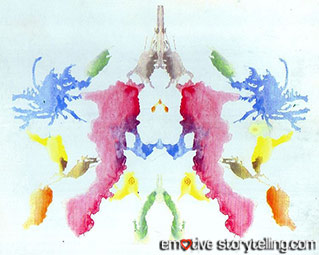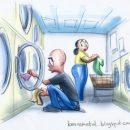I’d like to tell you a story. A psychologist decided he needed to learn some more about how his patient was thinking, so he chose to do an assessment using the Rorschach Ink blot test. You know, those cards with ink blots on them that are just ink blots? As he presented the first card for the patient to examine, the psychologist asked him to describe what he saw. Without much delay, the patient said “it looks like a couple having sex.”

Rorschach Inkblot test
Presented with the second card, the patient reported seeing a male sex organ. You get the idea. This theme was consistent as the patient examined each inkblot. Finally, the psychologist asked the patient why he thought he was responding with sexual themes to all of the blots. Without hesitation, the patient replied, “Well you’re the one showing me all of the dirty pictures.”
Have you ever wondered how it is that people come to believe what they believe? How can seemingly intelligent people fall for the numerous conspiracy theories, or disagree so strongly on political issues?
I believe it has to do with the fact that we all are hard wired to create stories from incomplete or ambiguous information, just as our patient did with the Rorschach Inkblot test.

What story do you see up there?
Have you ever looked up at clouds and made up a story about what you saw? How about our ancestors gazing at the stars and creating gods, fish, and crabs, each with their own story?
Our propensity for storytelling is part of who we are, it’s in our DNA. Not only do we tell stories, we are captivated by them as well. Research has even demonstrated that, unknown to us, our memories about events and even about ourselves, are largely fictional stories, not always based on facts.
It would seem then, that the stories we tell, tell on us. They are frequently created using incomplete information, faulty memories, and ambiguous data. Our stories simply fill in the blanks. They describe our beliefs, values, and biases.
They determine how we see things and how we respond to events.
Jonathan Haidt, a social psychologist, has provided us with research that demonstrates that the stories liberals and conservatives tell about how the world works, for example, — and about how they each can create a better world, — are about differing sets of values and the priorities given to them in determining what is considered to be right, ethical, and caring behavior.
Perhaps it’s time to recognize – that the stories we tell (and are most responsive to) are not about what’s true, but about what makes us feel good. Something worth thinking about.










You say that the stories we tell are “not about what’s true, but about what feels good.” How would that concept specifically translate to building compliance in patients with chronic illness?